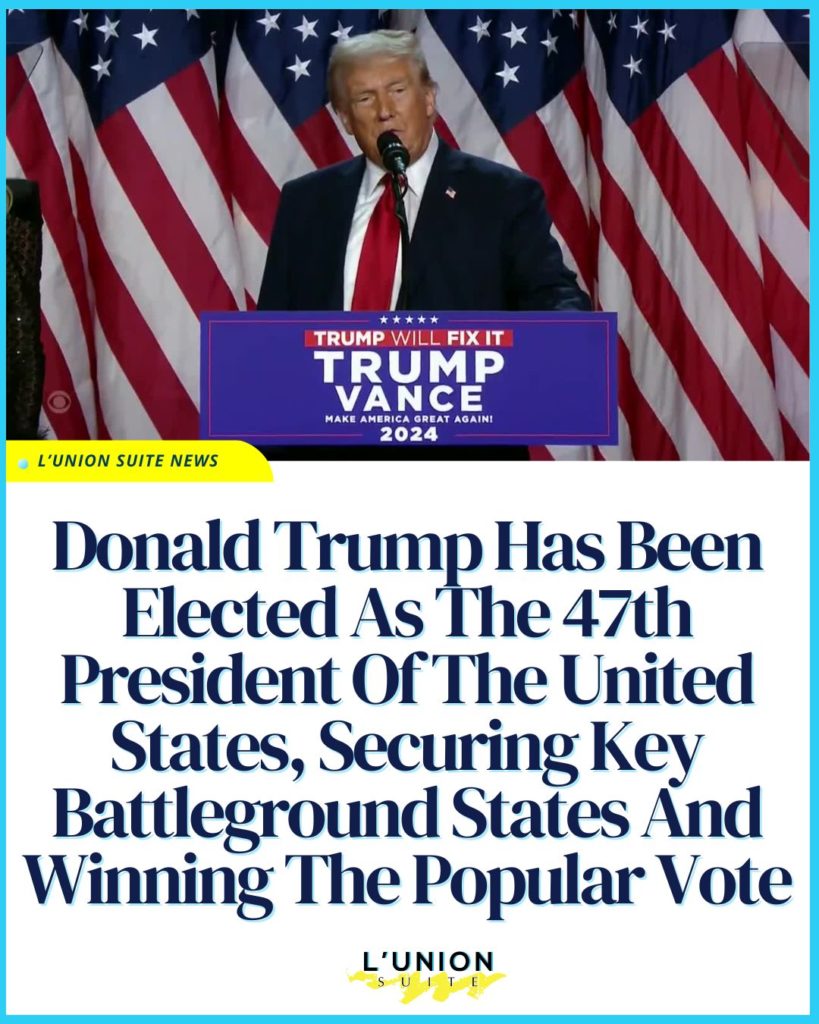In a stunning turn of events, Donald Trump emerged victorious in the 2024 U.S. Presidential election, claiming both key battleground states and the popular vote. As exit polls from CBS News reveal, a complex interplay of economic dissatisfaction and shifting voter demographics contributed to this historic win. Here’s a closer look at how Trump was able to make a comeback that defied expectations and reshaped the political landscape.
Economic Discontent Fueled Trump’s Appeal
A major factor in Trump’s win was widespread economic discontent among voters. Exit polls showed that two-thirds of voters viewed the economy as “bad,” with a significant number feeling financially worse off than they did four years ago. Among these voters, eight in ten backed Trump, underscoring a clear alignment between financial dissatisfaction and Trump’s economic message. Inflation also played a significant role, with a majority of voters citing it as a primary concern. Nearly a quarter of voters even described inflation as causing “severe hardship,” a sentiment that strongly motivated votes in Trump’s favor.
Kamala Harris Struggled to Mobilize Key Democratic Groups
Vice President Kamala Harris retained support from traditional Democratic voters but faced challenges in mobilizing crucial swing groups within the Democratic base. Her campaign struggled to make the connections necessary to build a winning coalition. While she enjoyed robust backing from Black voters, who showed 90% support among Black women and 85% among Black men, she was unable to expand her influence among other key demographics, especially those affected by economic concerns.
A Divided Vote Among Demographics
Trump continued to draw substantial support from white voters, while Harris maintained a majority among Black voters and managed to split the Latino vote more evenly. Latino men tended to lean toward Trump, while Harris held a slight advantage with Latina women. In total, Harris performed better among women, but Trump’s base remained solid and cohesive, especially in battleground states where economic pressures were most acutely felt.
The Path to Victory
Ultimately, Trump’s success can be attributed to his ability to maintain a solid coalition while leveraging voter frustrations with the economy. His positioning as the candidate of change resonated with those experiencing financial strain and feeling disconnected from the current political establishment. In the end, these dynamics were enough to propel Trump to the presidency, making him the 47th President of the United States.
As the nation absorbs the results of this election, the economic challenges and demographic shifts that defined it will undoubtedly influence the political landscape in the years to come. The 2024 election serves as a powerful reminder of the impact of economic sentiment on American voting behavior and the evolving coalition of support in national politics.
https://www.instagram.com/p/DCCCroTxUD9/?igsh=MW5nbGhrcmp3cGl5NA==
















